CLEO 2022 Plenary Speakers Highlight Advancements in Quantum Systems, Optical Imaging, Ultrafast Laser Science, Silicon Photonics and Diversity, Equity and Inclusion in the Optical Sciences
Becky Bosco, Senior Director, Corporate Communications
The 2022 CLEO: Laser Science to Photonic Applications Conference brought together laser science experts in a hybrid format, with many attendees gathering in San Jose, California. Over five days, attendees had a chance to hear about exciting laser science and photonics research in many sessions, including plenary sessions featuring five Optica fellows. Read our recap of these exciting plenaries below:
Dana Anderson, University of Colorado Boulder
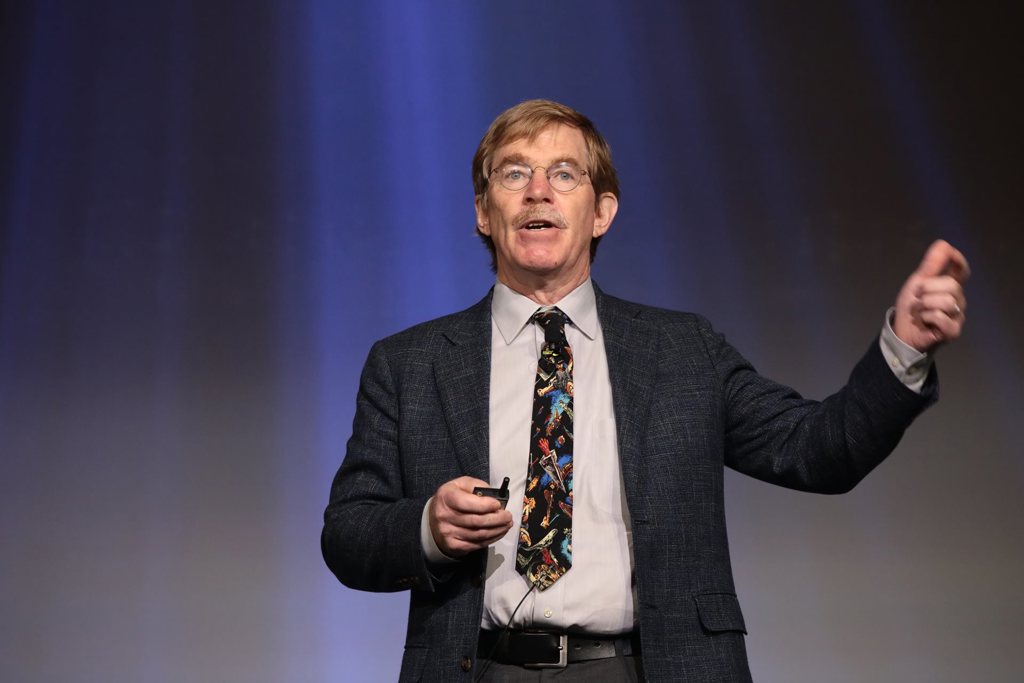
Dana Anderson
Dana Anderson, ColdQuanta CTO and a professor at the University of Colorado Boulder, kicked off the CLEO plenary with his presentation entitled “The Wedding of Maxwell and Schrödinger.” Anderson explained how the Maxwell and Schrödinger descriptions of atoms and light point the way to the control of matter wave functions using lasers. Anderson walked the audience through the challenges of cooling atoms, manipulating them into arrays, and then controlling the resultant quantum state. He described how we have reached a point where the quantum limit is accessible for use in a broad range of applications, from computing to sensing. The impact of atom-based quantum technology is already far-reaching for timekeeping, radio-frequency signal detection, inertial sensing, and quantum computing. Though still early days, Anderson envisions a future in which quantum matter systems will be common technology.
Hui Cao, Yale University
In 2014, the National Photonics Initiative identified imaging through complex media as a high priority area of research. Hui Cao, a professor at Yale University, has made dramatic advances and solved key problems to see what many thought obscured. She presented an overview of the field and the tremendous progress that has been made in her plenary talk, “Seeing through Walls and Around Corners: Shaping the Flow of Light in Complex Media.”
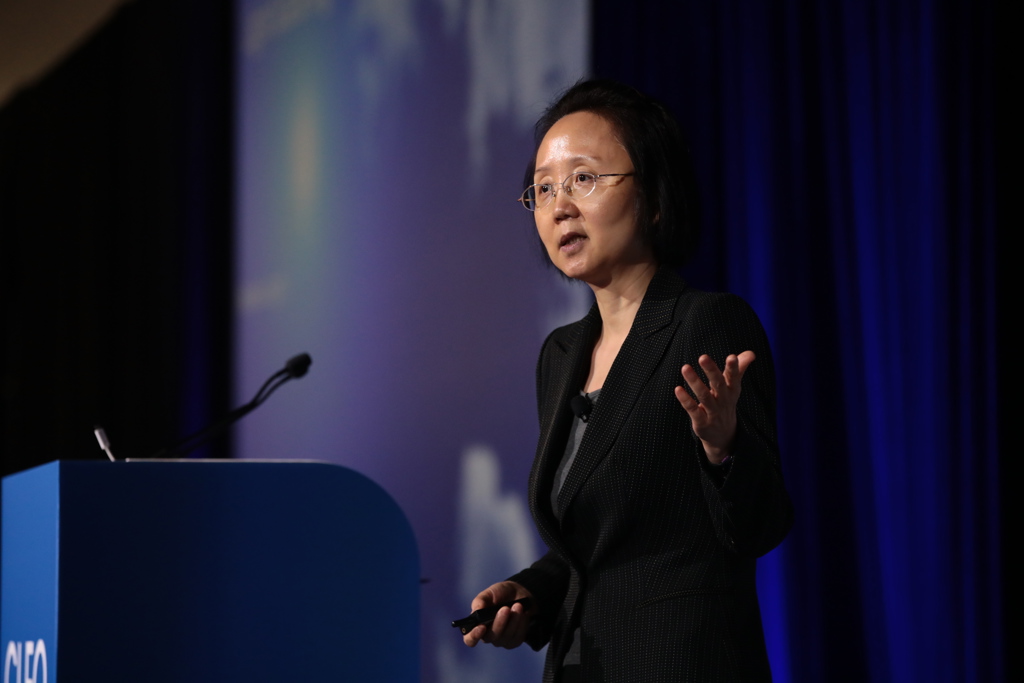
Hui Cao
Scattering usually reduces visibility in imaging, like trying to see through fog. The more fog you try to see through, the worse it gets as multiple scattering sets in. The same phenomenon reduces visibility in biological imaging. The loss of visibility in systems with multiple scattering is not inevitable, though. The key is to control the interference, a technique first proposed in a 1990 paper that inspired the title of Cao’s talk. Wave-front shaping prepares the light illuminating a complex medium in just such a way that the scattered light interferes with itself and enhances the illumination (or reduces it) in a region of interest. Scattering also limits imaging and pulse propagation through multimode optical fibers: random mode coupling caused by imperfections or external perturbations mixes and distorts the fields. Just as in the control of light propagation in complex media, wave front engineering in multimode fibers enables the preparations of light entering the fiber such that pulses are focused in time and space. Wave-front engineering to overcome multiple scattering is impacting important applications in optics like sensing, imaging, spectroscopy, communications, and cryptography.
Peter J. Delfyett, CREOL, University of Central Florida
Peter Delfyett, a professor at the University of Central Florida and a former president of the National Society of Black Physicists, started his career at Bell Labs in 1993. That year, he set a goal: to create chirped-pulse amplified (CPA) lasers with 1-kilowatt peak power. In his plenary talk titled, “Ultrafast Laser Science and Technology Using Semiconductor Diode Lasers,” Delfyett described the advances in CPA technology that allowed him to reach his goal after 20 years in 2013.
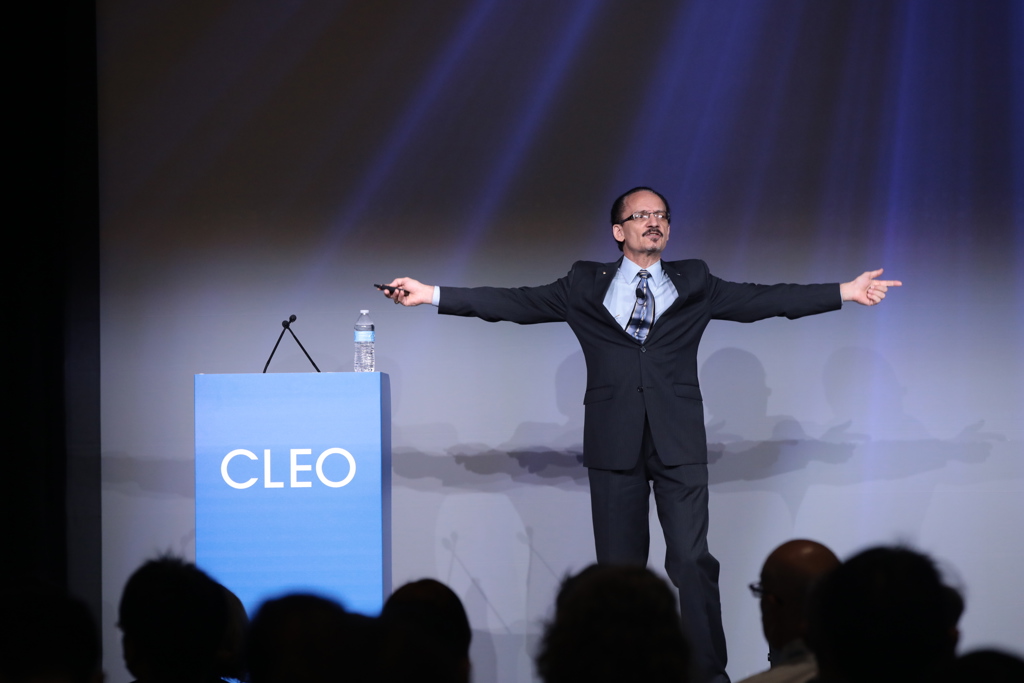
Peter Delfyett
Building on the foundational CPA concept, but extending it to multiple rounds of stretching, amplification, and compression Delfyett and collabortaors reduced the laser pulse duration from picoseconds to femtoseconds. This approach is now called extreme chirped-pulse amplification (X-CPA) and it is the tool Delfyett used to achieve a pulse with peak power of 1.4 kW. The associated intellectual property has been spun into a company, Raydiance, Inc, that produces software-controlled ultrafast lasers for material processing. Raydiance, Inc, has used X-CPA to advance technology in the biomedical, automotive, and microelectronics industries. Delfyett is working to put the components of X-CPA that now sit on a ten-foot (3 meter) optical table into a tiny photonic chip that can be mass produced and included in a wide array of products. To conclude his talk, Delfyett described the 9 M’s of photonics. The first five—making, modulating, multiplexing, moving, and measuring light—are part of the optics research process. However, he encouraged others in the audience, especially students, to not neglect manufacturing, marketing, and making money off of great science by moving it from the lab to the real world.
Benjamin Eggleton, University of Sydney Nano Institute
Benjamin Eggleton, Director of the University of Sydney Nano Institute, gave a CLEO Plenary presentation entitled “Shaping the Wave: Achieving Success and Innovation Through a Diverse and Inclusive Workforce” that underscored the benefits of a diverse and inclusive workplace. In his presentation, Eggleton offered best practices and proactive roles organizations can play in promoting diversity in the CLEO community.
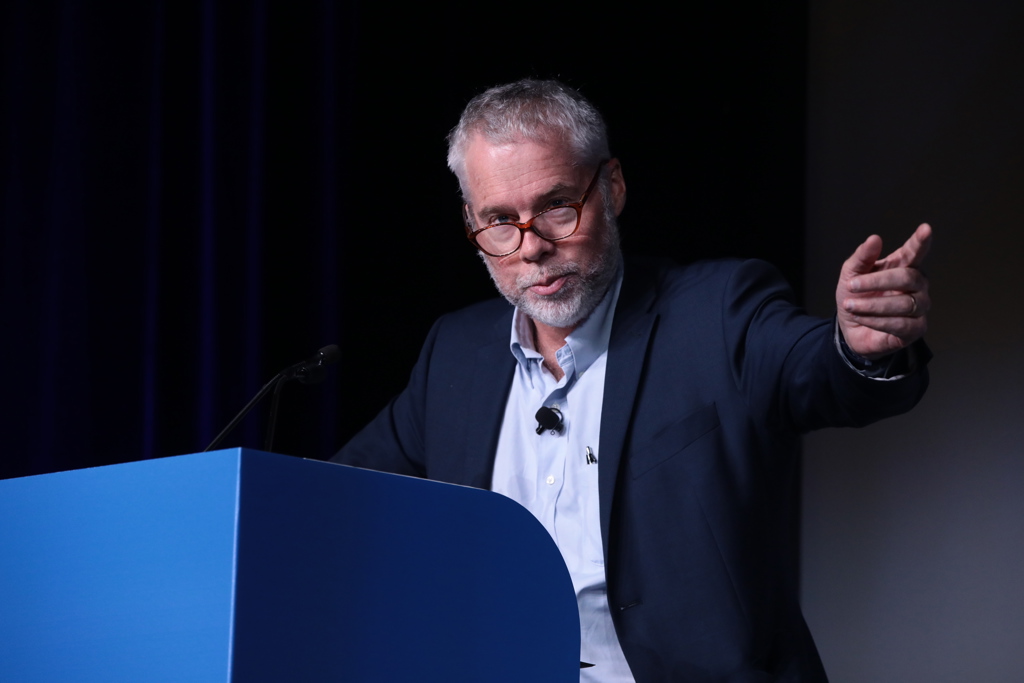
Benjamin Eggleton
Eggleton shared that proactive approaches for increasing diversity and inclusion drive innovation and increase organizational value, productivity, and sustainability in the workplace. Scientific conferences are an excellent venue for the emergence of novel research and professional collaboration. To continue providing attendees with beneficial experiences, conference organizers must also focus on promoting equity and diversity at their conferences. Without an attendee base across a diverse environment, conferences will be stagnant and miss the opportunity to include all perspectives. Conferences, like CLEO, where the latest research and product innovations debut, are essential for those looking to move up in their careers and broaden their professional networks. Eggleton concluded with a list of the tools available to scientific-based organizations for the advancement of diversity and equity in the community.
Michal Lipson, Columbia University and Optica President-Elect
Michal Lipson, Columbia University and Optica President-Elect, is at the forefront of advances in silicon photonics. Her CLEO Plenary presentation entitled “The Revolution of Silicon Photonics” highlighted applications in need of scalable optical technology.
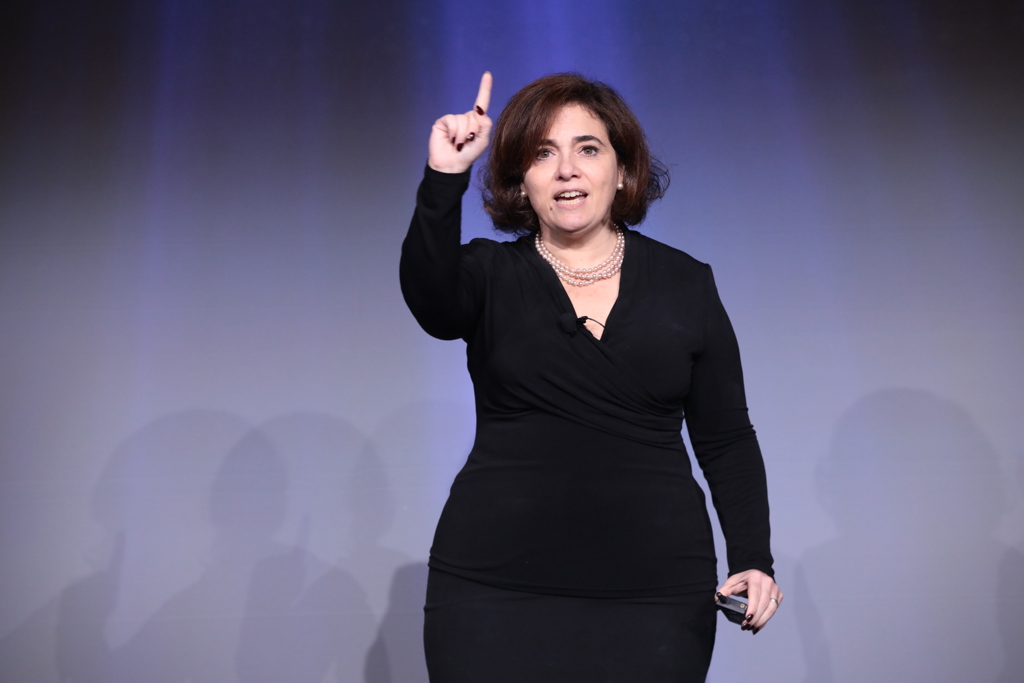
Michal Lipson
The silicon photonics industry has grown swiftly in the past 20 years thanks to the manufacturing infrastructure already in place for microelectronics. Lipson described how one of the key challenges in silicon photonics was overcome: the coupling of light from glass fibers to silicon waveguides where the mode mismatch would seem to cause most of the light to be lost. She showed the audience a packaged photonic chip that operates at tremendously high data rates and uses little energy. Lipson explained how the packaged photonic chip could be used by a company such as Nvidia for their autonomous vehicle platform to connect their GPUs and the AI within the car. Lipson explained that packaged photonic chips could be used to connect one GPU to another, or to a CPU, a computing rack or even between data centers. Lipson ended with a call to action to the audience to continue to do impactful research in silicon photonics, to meet the needs of future complex computing systems. Lipson concluded her presentation by honoring her father, Professor Raymond Fox (later Reuven Opher). He was one of the Technion Physics Department founders in Israel and later joined the University of Sao Paulo, Brazil.
To view these plenary talks in full, visit the CLEO Conference website.
